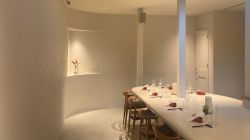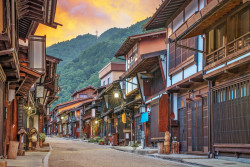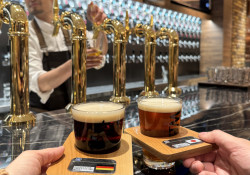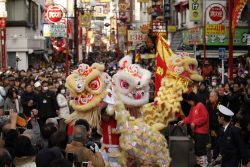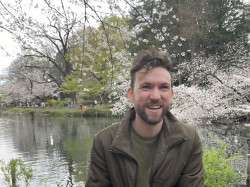
December 9, 2004
Southern comfort
Indonesia’s most vibrant village replenishes heart, mind and soul
By Metropolis
Originally published on metropolis.co.jp on December 2004

Photos by Matt Wilce
“Welcome to Paradise,” the sign says as you arrive in Bali. That’s quite some claim, but the Island of the Gods, as it otherwise claims to be, works hard at living up to its own PR. One of the 5,000 islands that make up Indonesia, the ancient Hindu kingdom of Bali effortlessly balances the modern and the ancient, catering to everyone from hippie trekkers and Aussie surfers to Japanese “princesses” in search of spa heaven. So, forgoing the party atmosphere of Kuta and its neighboring beach resorts, we headed for the hills to the cultural and culinary heart of the island—Ubud.
Arriving at the Maya Ubud Resort, a couple of kilometers outside the village proper, the promise of paradise certainly seemed fulfilled. Crossing a pond dotted with candles to the open-air thatched lobby, we got a view down the hotel’s well-manicured lawn that stretched to a distant cliff with a river flowing below. Lining each side of the central lawn are private thatched bungalows, nestled down in secluded gardens so that only the roofs are visible. We were shown to ours, a marble-floored cottage with a canopied four-poster bed, oval aluminum bathtub and a private plunge pool in the garden. Tempting though it was to kick back in the room or on the daybed on our deck overlooking the neighboring terraced paddy fields, an exploration of the rest of the hotel seemed in order. Following the lawn to the cliff, we found ourselves looking down onto the river below, a stunning pool and the structures that house the hotel’s spa. It took only a few minutes for us to get down there, discover a poolside restaurant and sign up for the full three-hour spa treatment the next day.

First put on the map by expatriate artists such as Walter Spies and Rudolf Bonnet, Ubud is the artistic capital of Bali. Everyone is an artist—your cab driver, his brother, your waitress’s uncle. Walk or cycle through the surrounding, lush verdant rice fields that are harvested three or four times a year compared to Japan’s paltry single cropping, and you’ll pass open workshops strewn with statues, their indolent carver undoubtedly taking a cigarette break, or painters sitting by completed canvases stacked up in rows. In town, every street has its share of shops, high-end galleries and tourist stands, and in the central market, pictures of every conceivable style and price are stacked next to spices, soaps and sarongs. At the top end of the scale, and worth a browsing, is the Agung Rai Museum of Art, which features pieces by Spies, owner Agung Rai and other well-known local artists.
There are two schools of thought, depending on who is driving you that day—Ubud is a good place to buy good art cheaply, or my friend/uncle has a shop somewhere else that sells gallery-quality pictures for less than the galleries. It is hard to tell who’s right. If cheap and cheerful mass-produced work is what you want, the market is as good a place as any. For high-quality work by better-known artists, you’ll have to pay gallery prices. Of course, like everything else in Bali, from taxi rides to turmeric, the price is always negotiable.
The central market and its surrounding streets are the heart and soul of Ubud. Although the market in Denpasar, the island’s true capital, is cheaper for sarongs, the traders in Ubud are less aggressive and the shopping experience is more varied and fun. You’ll find everything from spices (by a whole bag of giant vanilla pods for what you’d pay for one in Tokyo) and carved masks, to silver and knock-off Rolexes.
In addition to great shopping, Ubud has plenty more to offer. As the culinary center of Bali, restaurants abound. Award-winning Mozaic (0361-975768), with its al fresco kitchen and tables dotted around a lush garden, is a standout and is known as the island’s premier dining spot. Many of the local restaurants, such as Bumbu Bali 2 (0361-976698), offer daytime cooking schools, as does the Maya. We spent a pleasant few hours learning to prepare a traditional meal in the hotel’s open kitchen and another hour or so enjoying lunch afterwards. In addition to friendly instruction from the chef and his assistant, we also got a bag packed with an apron, a cookbook and spices to take home.
After a few days of relaxing at the riverside spa, sampling the local fare, a stroll through the monkey forest and an evening of Legong Dance in the village hall, we felt as if paradise had indeed been found.
JAL (www.jal.co.jp) and Garuda Airlines (www.garuda-indonesia.com) both operate direct flights from Narita to Denpasar (the airport is actually in Kuta despite its name). A car ride from the airport to Ubud takes approximately one hour and most hotels can arrange a pick-up service when notified in advance. The Maya Ubud Resort can be booked online at www.mayaubud.com or contacted by email at info@mayaubud.com. If you are staying elsewhere in Bali, most taxi drivers will offer a day’s touring of Ubud and the surrounding area for a flat fee. For general information on the island, see www.balitourismauthority.net.
[geo_mashup_map]
